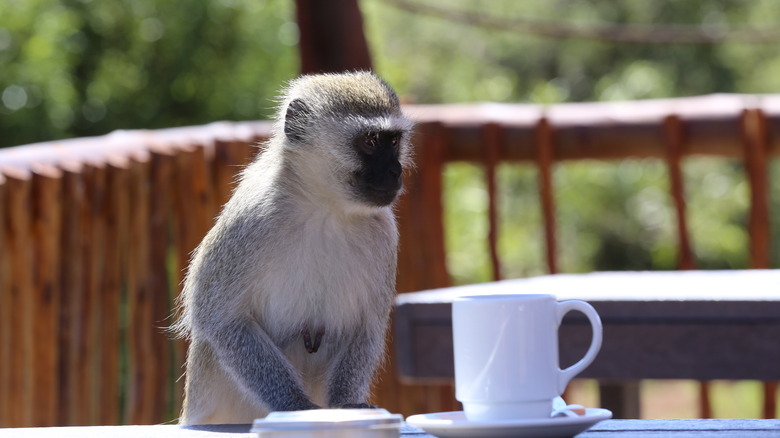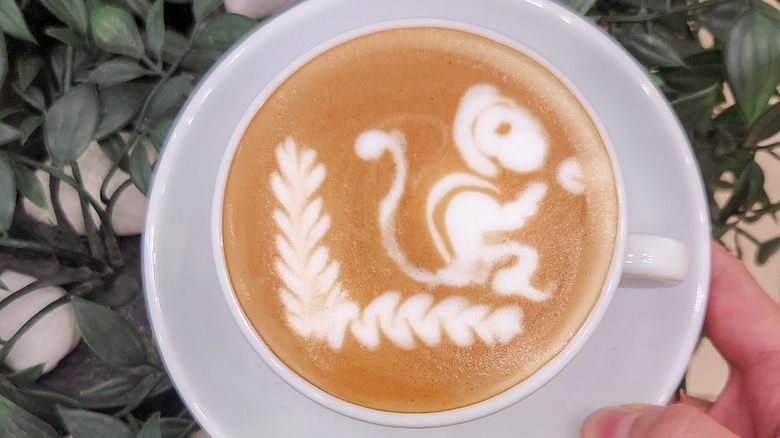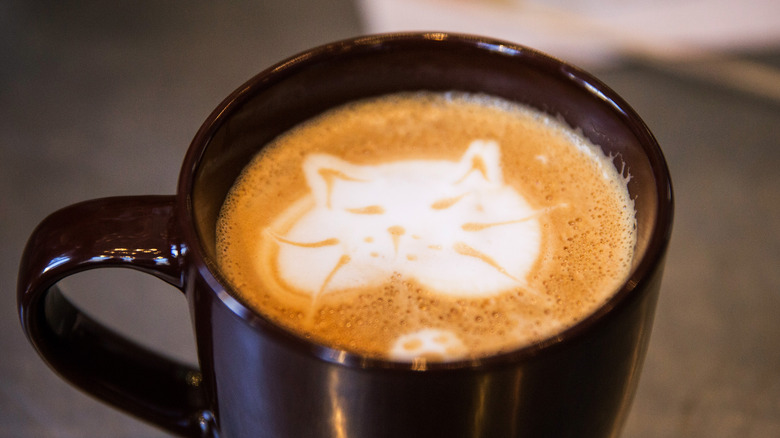Monkey Coffee Is Even Stranger Than It Sounds
Although not exactly a caffeine fiend, this author is known to sip a new Starbucks drink or seasonal coffee launch here and there. And yet, I was today years old when I learned what monkey coffee consists of or that it even existed in the first place.
Now, you will be too. Yes, monkey coffee. You may ask the obvious question, is it made of monkeys? Made by monkeys? Well, no and not exactly. There are no monkeys working as baristas to craft this coffee, but there are some involved in the first step of its creation. Monkeys in South East Asia snack on fruit of the coffee bean plant, and spit out the seeds. That is where the story of this caffeine delicacy begins. Coffee bean farmers are essentially lemonade of lemons in this situation because the monkeys won't stay away from the bean crops.
While the name monkey coffee did conjure up thoughts of "Indiana Jones and the Temple of Doom" brains scene, you and I can both take comfort that this coffee is not made of monkey. The monkeys really only have a bit of saliva in the game, but no other bodily functions are involved, thankfully.
What is monkey coffee?
Monkey coffee mostly comes from Taiwan and India, where Formosan rock macaques and rhesus monkeys get into coffee bean crops. The animals chew on the 'fruit' or 'cherry' of coffee beans and then spit them out. Rather than try to fight them off, coffee bean farmers use the masticated and discarded coffee beans to create a delicacy of the coffee world.
The monkeys saliva has an enzyme which partially breaks down the coffee bean and changes the taste. Monkey coffee is described as having a sweeter and more elaborate flavor than the average roast with notes of vanilla, citrus, and chocolate all at once. The coffee is also known to be heavy bodied, but not very bitter at all.
Coffee farmers and their workers take care to wash, process, and dry out the chewed beans as they would with regular coffee beans. When the chewed beans are dried out they have a more grayish color but can be roasted just like any other coffee bean.
Monkey coffee vs cat poop coffee
So, just in case the monkey spittle wasn't unconventional enough for your worldly taste buds, there's another type of java made as an animal byproduct — Kopi Luwak, or cat poop coffee.
Kopi Luwak also comes from Asia, but is specifically associated with Indonesia and the Far East. Both Kopi Luwak and monkey coffee are rare and expensive, but Kopi Luwak is exactly what its English translation says it is. Much like the monkeys of Taiwan and India, civet cats are wild animals that are drawn to the fruit of the coffee beans. However, civet cats eat the coffee bean's cherry and fully digest them.
After being fermented in the digestive system of the civet cats and passed through (yes, pooped right out), workers follow the same process of cleaning and drying out the fully passed beans. Instead of enzymes in the saliva, it's the enzymes in the civet cat's stomach that impart flavor on the coffee beans. There you have it, two animal coffees in a pod so to speak. Starbucks is always looking to hop on the next big beverage trend. I wonder how long it will take for monkey coffee to be offered in a venti size.


